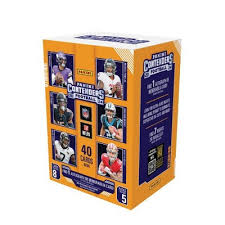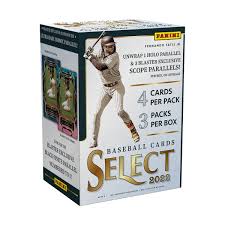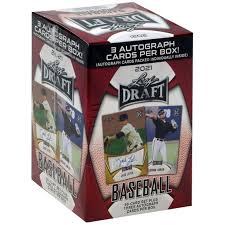

Pitchers and hitters have always been different animals. Their battle is a zero-sum game, and it’s at the core of the game we all love. Of the 273 players who have been inducted into the Baseball Hall of Fame, 84 of them have been pitchers.
But hitter and pitcher cards are valued differently as a general rule, and investing in pitchers provides several different considerations you don’t deal with when investing in position players.
But what are the considerations you should keep in mind when investing in pitchers? And how do pitchers fare, as an investment option?
There are plenty of iconic pitchers whose cards hold real value, and some of those vintage gems are blue-chip investments. But even when it comes to vintage cards of retired, Hall of Fame pitchers, pitcher cards almost always sell for less than equivalent hitter’s cards.
This is true throughout history. Ty Cobb cards typically sell for more than Cy Young or Walter Johnson cards. Babe Ruth and Lou Gehrig cards sell for more than Lefty Grove or Dizzy Dean cards.
Ted Williams and Joe DiMaggio cards tend to sell for more than the cards of Warren Spahn and Bob Feller. Hank Aaron, Willie Mays, and Roberto Clemente outsell even Sandy Koufax, a very popular pitcher of the 1960’s.
The trend continued into the 1970s with hitting stars outselling Tom Seaver and Steve Carlton. In some cases, the gap is a chasm. In others, it’s narrower. But the one constant is that the gap persists across generations of hitter and pitcher cards.


Why is this a thing? Maybe it’s because starting pitchers don’t play every day. Maybe people just dig the long ball (or high-average hitter). For whatever reason, while watching a top starting pitcher when they’re “on” is one of the most thrilling things in the game, their cards just don’t see the same level of demand as their hitting counterparts.
Again, they’re still valuable and still great investments, just not as pricy as hitters. In some ways, this is a good thing. Mid-grade, mid-1950s cards of Bob Feller and Warren Spahn feel like affordable gems. The same is true of the 1970’s Seaver and Carlton cards.


The one exception to the “pitcher cards tend to be less valuable than hitters” rule, is all-time strikeout leader Nolan Ryan.
During the heart of the junk wax era, the exception that proves the rule was doing amazing things at an age most have long been retired. Interest in his cards was strong then, and has remained so to this day.

The historical view and understanding of the generally lower values of pitcher cards compared to those of hitters is useful. But what considerations should we have when investing in current big-league pitchers and up-and-coming prospects?
The long and the short of it is that pitchers are more likely to get hurt than position players. When they get hurt, the chances of a pitcher being out for an extended period are also greater.
As pitchers throw harder and harder and focus on spin rate, injuries like elbow injuries that require Tommy John surgery have become almost an epidemic at this point.
The prospect of surgery followed by 12-18 months of recovery and rehab can put a big damper on the value of pitcher’s cards. Add in potential injuries to the shoulder and every other body part, and it’s not hard to understand why investing in the cards of a modern hurler can be fraught with peril.

The role of pitchers has constantly evolved over the history of the game. The old days of a team having two pitchers who pitched every other day and pitched the whole game are long gone.
But so are the 300 innings per year, 300 game winners of the 1950s to early 1980s. For a while 200 or 250 wins were becoming milestones for Hall of Fame consideration.
But today, the game continues to evolve quickly, especially regarding pitching usage. The move to have pitchers throw 5 innings at max effort not only has contributed (probably) to the increase in pitcher injuries but also makes things like pitching wins less regular and less telling.
There are several aging current major league pitchers who are sure-thing future Hall of Famers. But beyond the likes of Justin Verlander, Max Scherzer, Clayton Kershaw, and Zack Grienke, the picture gets cloudier.


The number of other current big league pitchers with a shot at the immortality of the Hall of Fame is very telling. Chris Sale and Jacob DeGrom have struggled with injuries for years, making their path to the Hall of Fame much harder. Gerrit Cole, who’s still got a ways to go, has spent 2024 up to this point rehabbing and not pitching.

Beyond that, who can say what a Hall of Fame pitcher may look like 20 years from now, or which current pitchers might be in consideration for election? Other than those mentioned above, no active major league starting pitcher has even 35 career WAR or 140 career wins.
So, things are tough enough for established pitchers, but what about up-and-coming prospects? For example, Paul Skenes rocketed from first overall pick to wowing the major leagues in less than a year. His young career is off to a hot start, and his collectors are snapping up his cards. One even went for $80,000 recently.
But are Paul Skenes cards a good investment? First, nothing against Skenes, and I hope he has a long and successful career. If he has a long and successful career and someday makes the Hall of Fame, that’d be amazing. I’m not sure it’d make some parallel of his 1st Bowman worth $80,000.
That’s more a commentary on prospecting in the hobby, but the chances that Skenes career is as clear a path to the Hall of Fame as that are low. Again, not saying he doesn’t do it, just that the path is fraught with peril.

Sadly, being a top pitching prospect doesn’t mean you’ll be a top pitcher, or have the longevity to have valuable cards over the long haul.
The acronym TNSTAAPP stands for “There’s no such thing as a pitching prospect” for a reason. Three of our top five all-time collecting prospect busts were pitchers, including the top 2. If you spent a lot of money on rookie cards of Todd Van Poppel or Brien Taylor, you know what I’m talking about.


Even if a pitcher makes considerable good on their promise, things don’t always go well in terms of long-term card value. A perfect example of this is the last “best pitching prospect ever” before Paul Skenes, Stephen Strasburg.
Strasburg was a #1 overall selection in the 2009 draft and was in the big leagues by 2010. He pitched in parts of 13 seasons, was a 3-time All Star, and finished in the top 5 in the Cy Young voting twice. But injuries ruined his promising career well short of Hall of Fame territory. His cards now sell for far less than they had during their peak.

So, based on what we know about pitchers’ card values, what’s a collector to do? Well, first off, if you’re spending small dollars and just want to buy cards of pitchers you like, that’s great. Go for it.
This is probably the only way to have a chance to make money, by hitting on a pitcher early, or one that’s overlooked, whose card prices aren’t already high. If you hit, the chance for high return is there. If you miss, you’re only out a small amount and have a few stories to tell.
But if you’re looking to invest significant amounts of your hard-earned collecting budget, you may want to avoid investing in pitchers. Or at least in pitchers who aren’t already all-time greats or sure-thing future Hall of Famers if they retired today.
But won’t you miss out on buying in low on the next all-time great pitcher?
Maybe, but in most cases, if you save your money and buy into the pitcher later in their career, you won’t have spent THAT much more than if you bought that pitcher as a prospect, and sometimes if you time it right, you may still pay less.
Plus, where most pitching prospects miss, you’ll have saved a lot of money waiting for things to shake out.
So, pitching is hard on bodies, and the very role of pitchers is changing fast compared to historical standards. Plus pitchers’ cards historically hold less value than equivalent hitters.
It does appear that investing in pitchers who haven’t already punched their ticket to Cooperstown isn’t the best use of your collecting resources.
Well, that’s one writer’s opinion, anyway. What’s your take on investing in pitchers? Is it something you agree is fraught with peril? Or do you prefer to see the glass as half full and hurlers to be worth spending your hobby dollars on. Let us know what you think at CardLines on Twitter.
I hit a SWEET auto from the #1 overall pick at PCB hobby
The Ultimate 2024 Football Card Brand Tier List (Panini vs. Topps and more!)
2025 Topps All Star Game Mega Box Product Review
Ripping the new Topps All Star Game mega box.
Is this new sports card store the BEST VALUE around?
I Tested eBay Auction Promotions So You Don’t Have To!
I deep-dove on Fanatics Collect so you don't have to (but should you?)
Panini is launching a WNBA Product at $30,000!?







2022 Topps Heritage Baseball Blaster Box Configuration: 7 Packs per Box – 9 Cards per Box. Plus 1 extra pack.









Keep up on breaking Sports Card News, our latest articles, product specials and exclusive content with expert analysis of hobby trends.

© Copyright 2025 - All rights reserved Cardlines.com / Media Techs LLC - Sports Card News, Reviews, Releases and BREAKS - #thehobby.
Important: When you click on links to various merchants on this site and make a purchase, this can result in this site earning a commission. Affiliate programs and affiliations include, but are not limited to, the eBay Partner Network.
Sports Card Scavenger Hunt! (5,000 Subscriber Special!)
Cardlines July 11, 2025 9:01 am